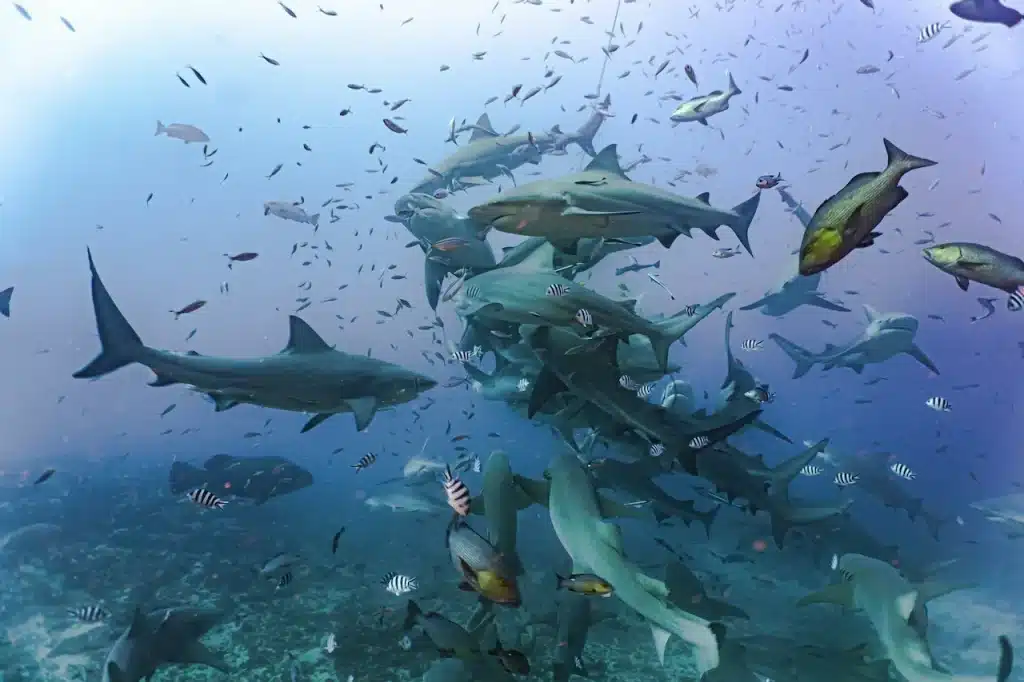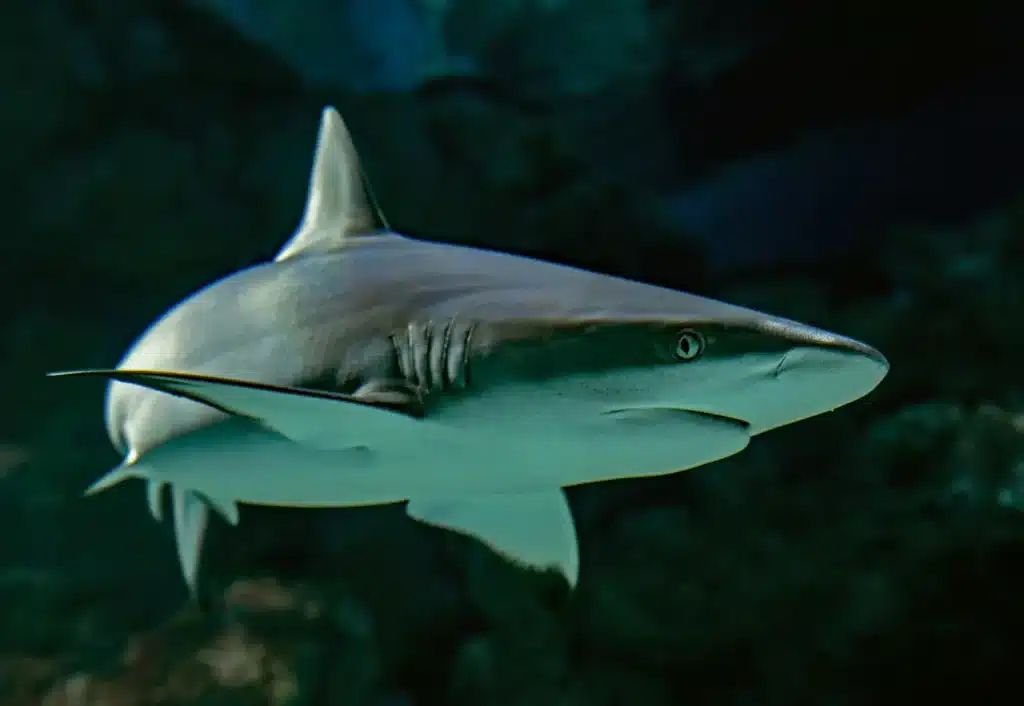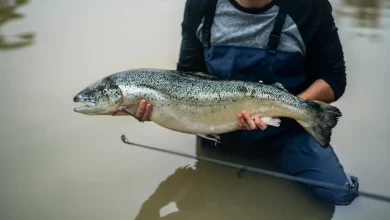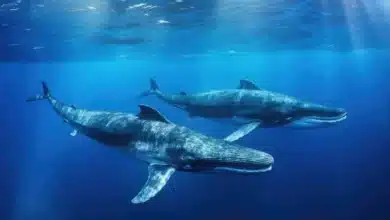Few places on Earth are left where nature is untouched. The oceans hum with life, and the time slows to the rhythm of the waves crashing against the volcanic cliffs. Pitcairn Island, a small archipelago of islands in the South Pacific, is one such place.
It is not easy to get there. No airports, major ports or tourist resorts exist. There are only four islands located nearly 3,000 miles from the nearest continent. The combined population is less than 50, mainly descendants of HMS Bounty mutineers. But for National Geographic Explorer-in-Residence Dr. Enric Sala is a National Geographic Explorer-in-Residence. For him, these islands are more than just a place of isolation. They hold the key to saving one of the world’s last wild ocean ecosystems.
Welcome to “Sharks of Lost Island.”, the story of an adventurous journey, a mission of scientific discovery, and the vision of preserving pristine waters in a world that has been forgotten, a place filled with coral and sharks and a secret under the surface. Welcome to The Sharks of Lost Island.

The Heart of the Pacific
Imagine sailing across the ocean, one of its most remote expanses. You are thousands of miles away from any major cities when you reach the Pitcairn Islands, four volcanic dots spread across the vast Pacific. Pitcairn is the only inhabited island, along with Ducie, Henderson and Oeno.
They may appear to be nothing more than isolated outposts made of rock and sand. Under the sea lies one of the last intact marine environments in the world. Coral reefs are like living cathedrals. Unaffected giant clams thrive. Sharks, the apex predators in the ocean, roam freely without being bothered by human development or commercial fishing.
Enric Sal was a former professor who became an ocean activist. This untouched wilderness, for him, was irresistible. He dedicated his entire life to protecting and documenting the last remaining pristine marine ecosystems. He believed that the waters surrounding the Pitcairn Islands should be protected as a marine reserve to preserve their incredible biodiversity.
A Perilous Journey
It’s not just difficult to reach the Pitcairns, it’s dangerous. Expeditions are dependent on ocean voyages because there are no major ports or commercial flights. They also face unpredictable weather conditions and rough seas. Sala, his team of marine biologists, photographers,a nd local guides, set sail from Tahiti aboard a research vessel outfitted with underwater cameras and diving gear.
It took a few days to cross the open ocean and thousands of kilometres, sometimes in stormy weather. The isolation became real. No coast guards, no escape routes. There was nothing but sea in all directions and the mission ahead.
The first stop was Henderson Island. This UNESCO World Heritage Site is known for its endemic flora and fauna, as well as for having some of the highest plastic pollution levels on Earth. Henderson Island, despite its remoteness, had become a grim reminder of how human impact can reach even the most remote corners of the world.
The team’s true mission began underwater.

Into Shark Territory
It was as if you were stepping back in time when diving into the Pitcairn’s waters. There were sharks everywhere – grey reef sharks and whitetips. These weren’t shy or skittish animals. These creatures were confident, curious and in control.
Even seeing one reef shark during a dive in most places is considered a fortunate moment. In the Pitcairns, you may see dozens of sharks circle you in a matter of minutes. It’s not because they are aggressive. This is because they have never been afraid of humans.
Sharks are scarce in places where humans have a dominant presence. More than 90 per cent of the world’s largest shark populations have been wiped out by overfishing, shark finning, and habitat destruction. Here, in these isolated waters, sharks flourish as they should – at the top of the food chain and keeping the reef ecosystem balanced.
Sala and his underwater drone team captured these scenes using a high-definition camera. They collected data about fish populations, coral health and ocean chemistry. The researchers used baited underwater video systems (BRUVs) to monitor shark behaviour without disturbing the natural behaviour of the animals.
They found an ecosystem that was thriving and balanced, a sea Eden, almost untouched by humans.
Why Sharks Matter
Sharks often get a bad rap. They were made villains in movies like Jaws. In reality, sharks are vital to the health of oceans. Sharks are apex predators, which means they regulate populations of species that fall below them on the food chain. They help to maintain diversity and productivity by ensuring that no species dominates.
Ecosystems would collapse without sharks. Coral can die off. Algae may overgrow. The fish population becomes imbalanced.
Sala’s mission was not just scientific, but also a powerful conservation tool. By documenting the way a healthy coral reef system works in conjunction with sharks, he made a compelling argument for conservation. He wanted to show leaders around the world what an ocean would look like if they just let it be.
The Vision of a Marine Reserve
The idea behind this expedition was bold: to transform the waters surrounding the Pitcairn Islands into one of Earth’s largest marine protected areas (MPAs).
Marine reserves are similar to national parks in the ocean. They provide legal protection against destructive activities such as drilling and commercial fishing. MPAs have been shown to lead to greater fish populations, greater biodiversity, and more resilient ecosystems. The Pitcairn Islands were a great candidate.
It’s not just science that goes into establishing a marine park. Politics, economics and the local community will all be important factors. Sala’s role as an advocate was crucial.
He presented the findings of the expedition to the Pitcairn local council, proving how precious and unique their waters are. He said that the Pitcairn people could be proud of their irreplaceable ocean by protecting it. They would also leave a lasting legacy, attract ecotourism and have a sense of pride.
From Science to Action
The campaign gained momentum with the help of hard data, stunning photos, and worldwide support. Sala and the National Geographic Pristine Seas Team worked with the British Government to advocate for formal protected status.
In 2016, this dream became a reality.
The United Kingdom designated the Pitcairn Islands Marine Reserve. It encompassed over 833,000 square kilometres, an area larger than California. At the time, it was the largest contiguous Marine Reserve in the world.
Sala and his team dived into waters where sharks were still dominant. Now, those waters are protected by law. No commercial fishing. No deep-sea mining. The ocean has always been.
A Legacy for the Future
This was more than just a win for Sala. It was a role model. Proof of concept. When science, storytelling and local voices are combined, we can save the last wild spaces before they disappear.
The Pitcairn Expedition wasn’t over. The Pitcairn expedition was just one part of an international movement. Sala has since led similar efforts to protect more than 6 million square kilometres of ocean in the Arctic and Galapagos.
The memory of the Pitcairns is special. It’s a place where time stopped and sharks still reigned. And where a few people with a lot of determination made a real difference.

What you can do
It is not necessary to be a marine scientist or an explorer to protect the oceans. Here are a few ways you can get involved.
- Support marine conservation organisations like National Geographic Pristine Seas, Ocean, and Sea Shepherd.
- Reducing single-use plastics is important, as they often end up on remote islands like Henderson.
- Choose sustainable seafood options to be a responsible consumer (see Seafood Watch).
- Spread the word on marine reserves and their importance.
- Travel with consideration – If you are visiting marine environments, consider eco-friendly tours and Indigenous-run ones.
Final Thoughts
The story of Sharks of Lost Island goes beyond a documentary or even a scientific report. It’s more of a love letter to the ocean. This film is a reminder that despite the skyscrapers and satellites, there are still places on Earth where nature can thrive.
This is a story of what we could lose but also about what we can still protect.
The Pitcairn Islands are tiny dots on a vast sea of blue, but they have a powerful message: it is never too late to protect what’s important.
Sometimes, it only takes a trip to the edge and a few brave sharks to show us how we can get home.




